- Home
- Thornton Wilder
The Selected Letters of Thornton Wilder Page 3
The Selected Letters of Thornton Wilder Read online
Page 3
The best thing a young playwright could do was to immerse himself in the theater, Wilder believed. Climb walls, get thrown out by guards, hide behind back rows—do everything possible to see hundreds of hours or rehearsals, he wrote in 1954. Fifty hours backstage were worth a thousand in the audience. The beginner might have to work at some other occupation to earn a living, but that would not hurt him. It was important, however, not to earn that living by writing rubbish. Writing down could do real damage.
More than forty years later, he dispensed savvy advice about the writing process itself. Select a subject “close to you—not autobiographically but inwardly.” Think about it. Take walks. Block out the main crises. Begin not at the beginning but at some scene that has already started to “express itself in dialogue.” Take your time. Don’t write too much in a day. Keep a regular steady pace, and the next day’s writing will take shape while you are sleeping.
In other communications Wilder addressed specific issues of stagecraft. He liked opening a play in silence, as Shakespeare did in Hamlet. He heartily disliked ending with a message, as T. S. Eliot had in The Cocktail Party. He was “grateful and absorbed” by the play until the last fifteen minutes, Wilder wrote Laurence Olivier and Vivien Leigh, but “angry as a boil” when the “answers” began to descend. To another famous actor, Cary Grant, he offered his thoughts about how a film might be made of Gulliver’s Travels. Play it straight, he counseled. Treat it not as a fantasy but as “dead-pan sober-serious travel-experience.” And don’t be afraid of taking liberties, for it would be difficult to keep audiences interested in the giant-pygmy situation for two hours.
In 1957, Wilder proposed a book of letters about the theater, written by and to himself, to his editor Cass Canfield. These would include his correspondence with Ruth Gordon about The Matchmaker, with Sybil Colefax about the London and New York theater, with Max Reinhardt about The Merchant of Yonkers, with Jed Harris about Our Town, and with Laurence Olivier about The Skin of Our Teeth. It would make for a lively book, and his sister Isabel could edit it. Unfortunately, this volume was not published, but these Selected Letters present most of Wilder’s side of that conversation.
Wilder suggested the theater-letters book as a way of benefiting a friend and fellow artist. He was collaborating with composer Louise Talma on an opera based on The Alcestiad, he explained to Canfield, and Talma “was living on very narrow means.” The question was how “to get money to her—across the barrier of her pride and independence.” Wilder thought that she might accept royalties from such a book, inasmuch as it would contain some of their letters back and forth about The Alcestiad and the funds could be considered as subsidizing their common project, the opera. Perhaps his idea wasn’t practical—he even wondered if it was in good taste—but surely it originated in a wise and largehearted sensibility. Thornton Wilder wanted to do more with his life than to give pleasure to those who read his novels or saw his plays. The trouble with T. S. Eliot, he decided after seeing The Cocktail Party, was that he didn’t like people. Wilder did, went out of his way to make them happy, and profited from doing so.
Armed with that outlook, he bucketed along well into his seventies. He was thankful, as he wrote John O’Hara in 1965 (the year O’Hara reached sixty), not to be “tormented by that panic over the passing of youth that beset Scott Fitzgerald and Hemingway.” He hoped that O’Hara enjoyed each new decade as much as he had. If you welcomed each decade, Wilder said, you could keep the past ones green inside you. And you could continue to do your work as well, for, as he observed in a 1972 letter, there was no age limit for creativity. There were, however, “two required conditions: EROS at your right hand, Praise of life at your left.”
Scott Donaldson
Scottsdale, Arizona May 2008
INTRODUCTION
The rewards of reading letters come to us in extent, not in bright single moments.
—THORNTON WILDER
“THREE ENGLISH
LETTERWRITERS ”
(unpublished lecture, May 13, 1930)
Thornton Wilder (1897-1975) had a sixty-year career as a successful author—from his first play, The Russian Princess, produced in 1913, when he was sixteen (to reported raves from schoolmates), to his seventh and last novel, Theophilus North (1973), published two years before his death and a best-seller for twenty-six weeks. In the intervening decades, he had far more success than failure, playing such varied roles as translator, adapter, essayist, screenwriter, opera librettist, scholar, cultural emissary, lecturer, teacher, actor, and, of course, novelist and playwright. He remains the only writer ever to receive the Pulitzer Prize in both drama and fiction.
Throughout his life, Wilder played yet another role, one until now neither adequately acknowledged nor sufficiently documented: He was an avid connoisseur and practitioner of letter writing. In retrospect, it is no surprise that, in the spring of 1928, in the midst of international acclaim for his second novel, The Bridge of San Luis Rey, he accepted an invitation from Yale University to deliver the Daniel S. Lamont Memorial Lecture on the topic of “English Letters and Letter Writers,” the first of some two hundred public lectures he would give during his career. He devoted a section of his talk to the virtues of the letters written by Mme. de Sévigné, whom he had memorialized in The Bridge of San Luis Rey through the figure of the Marquesa de Montemayor. Letters were to continue to play an important role in his fiction and drama—from an entire novel, The Ides of March (1948), written in epistolary form, to the amazement Rebecca Gibbs expresses in Our Town (1938) that “the postman brought … just the same” a letter addressed to “Jane Crofut; The Crofut Farm; Grover’s Corners; Sutton County; New Hampshire; …. United States of America; Continent of North America; Western Hemisphere; the Earth; the Solar System; the Universe; the Mind of God.”
There is ample evidence as well that Wilder was himself a prolific practitioner of the art of letter writing. In a typical aside in a March 1935 letter to his mother and his sister Isabel, he reported, “Last night I sat up til two and added 18 new letters to the 8 I had got off earlier in the day.” On March 20, 1948, he wrote William Layton, “This evening I mailed 24 [letters], all written today.” It is estimated that the total number of letters Wilder wrote exceeds ten thousand. Thanks to the Wilder family’s habit of preserving correspondence as well as to the passage of enough time since his death for letters to migrate into places where they can be found, we have been able to read some six thousand in the process of compiling this volume, which is the first to present examples of Wilder’s correspondence across the entire span of his writing life. Our choices from scores of fine letters represent the range of his friendships, public achievements, and private interests. We have included letters that do indeed encompass almost his full life: The earliest letter we found was written, we believe, when Wilder was about nine years old. The first we have selected finds him at age twelve in 1909, while the last is dated December 3, 1975, four days before he died.
Until recently, of course, letters were a primary means of personal and business communication and letter writing was a routine part of a person’s life. Wilder became a letter writer at a young age because of his personal circumstances. When he was growing up, his family was together as a unit very infrequently. During the eleven-year period between 1906, when nine-year-old Thornton left Madison, Wisconsin, for China, and 1917, when he enrolled as a sophomore at Yale College in New Haven, Connecticut, where his parents had recently moved, all the Wilders were under one roof for a total of only twelve months. Distances between one or more absent family members were more often than not measured by oceans. Even Thornton’s summers from 1913 to 1917 were spent away from home, working on farms in California, Kentucky, Vermont, and Massachusetts. Given these circumstances, letters became the only way he could communicate with his friends and, especially, with his family. Letters to his father were particularly important during Wilder’s youth. From his consular posts in China, with his wife and children rarely present,
“Papa”—described by his elder son, Amos, in Imagining the Real (1978), as a “very intensive parental planner”—sought through a flood of letters to guide his children’s activities. He expected and received frequent status reports from them. This early letter writing may have played a part in turning the younger Wilders into authors; each of the four children born between September 1895 and January 1900 became a published writer. Thornton Wilder grew up in a family where reaching for a pen and a blank piece of paper (all his life, he handwrote almost all of his letters and creative work) was first, second, and third nature—and had to be.
Wilder’s peripatetic lifestyle persisted for the rest of his life. After 1928, from the earnings of The Bridge of San Luis Rey, he built a house for himself and his family in Hamden, Connecticut. He maintained the house and, for the rest of their lives, supported the members of his family who lived there. But Wilder himself, despite a handsome study on the second floor, treated the family home as a base to which he returned periodically, rather than as a primary place to live and work. He was an artist who had to go away in order to write—to hotels or occasional short-term rentals in North America, the Caribbean, Mexico, and abroad; to the MacDowell Colony, an artists’ retreat in New Hampshire; or to cabins on transatlantic steamships, the slower the better. Given this lifestyle, letters were crucial for keeping in touch; they knit his world together, just as they had when he was growing up. He reportedly disliked talking on the telephone, employing it chiefly for the exchange of necessary details, while using letters for more expansive conversations.
By the late 1920s, Thornton Wilder’s world had, of course, grown far larger, literally and figuratively, than when he was a boy. His travels had accelerated and widened in scope, his experiences had become more varied, and he had accumulated an extremely large group of friends and acquaintances, a small circle of whom he corresponded with over many years. Among those represented in this volume, his friendships with Gilbert Troxell, C. Leslie Glenn, Amy Wertheimer, Sibyl Colefax, Alexander Woollcott, Gertrude Stein and Alice B. Toklas, and Ruth Gordon and Garson Kanin were of especially long duration. He met Troxell when they were both Yale undergraduates, and they remained friends until Troxell’s death in 1967. Wilder and Glenn met in 1922, when they were both assistant housemasters at the Lawrenceville School, and the last letter we have included from Wilder to Glenn is dated 1973, although they continued to correspond until Wilder’s death two years later. Wertheimer met Wilder in the summer of 1925 and they corresponded until her death in 1971. And Wilder exchanged lengthy letters with Colefax between 1928 and 1950, the year of her death. Wilder also had a large coterie of “honorary nieces and nephews” (in addition to his actual niece and nephew), young people who became his protégés. Among those whose careers he encouraged and to whom he regularly dispensed advice were June and Leonard Trolley, Byron and Ruth Farwell, Sally Higginson Begley, Mia Farrow, and Marcia Nardi.
Until poor health intervened toward the end of his life, Wilder personally answered a staggering number of the cards and letters he received, whether from producers or directors wanting to stage his plays, strangers seeking advice or praising one of his works, or students acting in one of his plays or writing papers about him. He explained this generosity by famously referring to himself in a January 12, 1953, Time cover story as an “obliging man.” Although he meant this phrase somewhat ironically, he also intended that it be taken at face value, for Wilder saw his far-flung audience as a worthy and important part of his life.
While we have attempted in this volume to present the variety of Thornton Wilder’s correspondence, we have had to omit a number of valuable letters, especially those relating in detail to Wilder novels or plays or to specific works by other writers, because they would have required the reader to possess extensive knowledge of the material discussed. Furthermore, because all of Wilder’s letters to Joyce scholar Adaline Glasheen have been published (A Tour of the Darkling Plain: The Finnegans Wake Letters of Thornton Wilder and Adaline Glasheen, edited by Edward W. Burns with Joshua A. Gaylord [2001]), we have included only one from their extensive correspondence. Wilder’s many letters to Gertrude Stein and Alice B. Toklas appear in The Letters of Gertrude Stein & Thornton Wilder, edited by Edward W. Burns and Ulla E. Dydo, with William Rice (1996); therefore, we have cut back our selection of these to permit other inclusions. Numerous Wilder letters either have not survived or remain unlocated in libraries (this is especially true of repositories outside the United States) and in the possession of their recipients (or the latter’s descendants). As a result, gaps do occur; this is most noticeable during the first twenty-five years of Wilder’s life. For that period, the great majority of the letters we found were those to his family; so while such letters undoubtedly did represent a high percentage of those he wrote during this time, our selection probably increases that ratio somewhat. We also elected not to include any of the several letters he wrote entirely in a foreign language, because we felt that to present these in translation would not satisfactorily convey their tone and flavor. As to our criteria for selecting among the items we did locate, they simply echo those standards Wilder believed a letter should reflect: a sense of the “historical—data relative to social implications of a period”—and “a natural gift for letter-writing,” as he indicated in an August 1951 letter to scholar and critic Robert W. Stallman, his former student at the University of Chicago. Basically, we have included letters that either shed light on Wilder’s many activities and interests and those of his friends or display his skill with words. Often, we were able to find letters that we believe do both.
Today, Thornton Wilder is best known as the author of Our Town, a play that is performed every night of each year; and of The Bridge of San Luis Rey, a novel widely taught in secondary schools. Altogether, he published seven novels, five full-length plays, and a score of one-act plays, translations, adaptations, and essays. Thornton Wilder’s literary record is not complete without his correspondence. Letters and letter writing played a major role in Wilder’s personal and creative life. He wrote letters prolifically, took the task seriously, and was keenly aware of the epistolary tradition of which he was a part. If this volume helps to familiarize readers with a vivacious, erudite, and multitalented man with a myriad of interests—a man of letters both literally and figuratively—and, above all, if it leads some of them to a broader reading of his work, it will have accomplished its intentions.
Part One
BEGINNINGS: 1909-1920
THORNTON NIVEN WILDER WAS BORN IN MADISON, WISCONSIN, on April 17, 1897. His twin brother died at birth, and, according to family lore, Wilder himself was so frail that he was carried around on a pillow for the first months of his life. At the time of Wilder’s birth, his father, Amos Parker Wilder, was editor and part owner of the Wisconsin State Journal. By 1901, when Thornton was four years old, his father had acquired a controlling interest in the paper and was well-known in Wisconsin political circles.
Because his parents exerted an unusually strong influence on their children, a brief account of their backgrounds is necessary here. Amos Parker Wilder was born in Maine in 1862, grew up in the state capital of Augusta, and graduated from Yale College, where he was a scholar, singer, orator, editor of one of Yale’s literary magazines, the Courant, and a member of a senior secret society. After graduating in 1884, he taught for two years and then became a journalist, working first as a reporter in Philadelphia. He returned to New Haven to edit the New Haven Palladium, while also working on a doctorate at Yale. He wrote his dissertation on the difficulties and possible solutions of governing American cities, and received his Ph.D. in 1892. When he lost his editorship at the Palladium for attacking political figures who had a financial interest in that newspaper, he left New Haven for a position as an editorial writer on a New York City paper. In 1894, he traveled to the Midwest, intent on finding a newspaper to invest in and work on. He realized his ambition in the university town of Madison, Wisconsin, where, with his s
avings augmented by loans from friends, he bought a one-quarter interest in the Wisconsin State Journal.
Before the year was out, another important change occurred in his life: twenty-one-year-old Isabella Thornton Niven of Dobbs Ferry, New York, accepted his proposal of marriage, and on December 3, 1894, they married and returned to Madison to live. Isabella was the daughter of the minister of the Presbyterian church in Dobbs Ferry. Her maternal grandfather was Arthur Tappan, cofounder of the American Anti-Slavery Society, who, with his brother Lewis, did much to support the antislavery movement. Both men were also prominent in backing the Oberlin Collegiate Institution and probably ensured its survival as Oberlin College. Isabella was a graduate of the Misses Masters School in Dobbs Ferry, where she published poems in the school paper and studied languages, piano, art, and literature. Before her marriage, she attended concerts, the theater, and lectures in New York City and was attuned to the cultural offerings of the day.
The literary interests of Amos Parker Wilder and Isabella Niven Wilder were reflected in their habit of regularly reading aloud classics and Scripture during the childhood of the four children who were born during the next five years: Amos Niven (September 18, 1895), Thornton Niven (April 17, 1897), Charlotte Elizabeth (August 28, 1898), and Isabel (January 13, 1900). Amos Parker Wilder, an active Congregational layman, was also very concerned with his family’s religious life and with the cause of temperance.
During the first years of their marriage, because of the loans on the newspaper that Amos Wilder had to repay, money was scarce. Nonetheless, in 1901, they managed to build a cottage on the shores of Lake Mendota in Maple Bluff, just outside the city of Madison, where the family lived each year from early spring until late fall, and Isabella Wilder was able to take a European trip with Madison friends. Amos Parker Wilder almost certainly supplemented his income with lectures on municipal government at the University of Wisconsin, and, as he was becoming a well-known speaker, with engagements on similar subjects around the state. His eloquence was often grounded in his moral certainties, which sometimes strained relationships with political allies. In 1903, this occurred when he changed his paper’s editorial policy from support for the “progressive” wing of the Wisconsin Republican party to the more conservative “stalwarts.” Around this time, he began to explore professional opportunities outside the newspaper business.

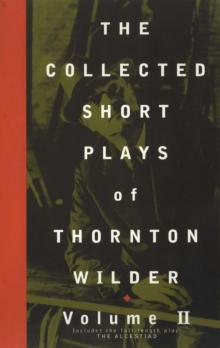 The Collected Short Plays of Thornton Wilder, Volume II
The Collected Short Plays of Thornton Wilder, Volume II Penelope Niven
Penelope Niven The Selected Letters of Thornton Wilder
The Selected Letters of Thornton Wilder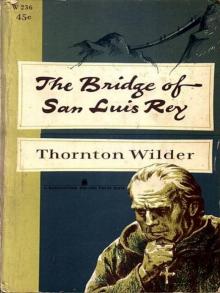 The Bridge of San Luis Rey
The Bridge of San Luis Rey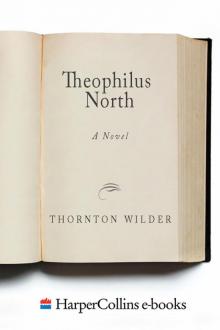 Theophilus North
Theophilus North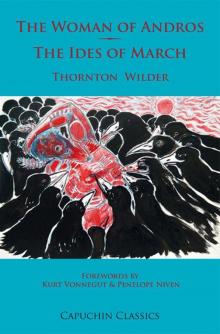 The Woman of Andros / the Ides of March
The Woman of Andros / the Ides of March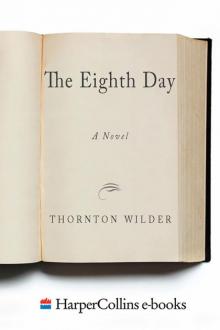 The Eighth Day
The Eighth Day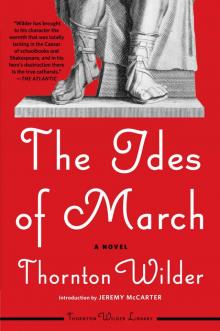 The Ides of March
The Ides of March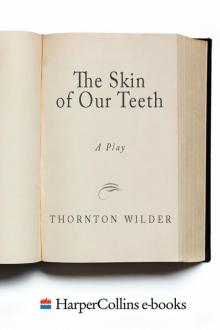 The Skin of Our Teeth
The Skin of Our Teeth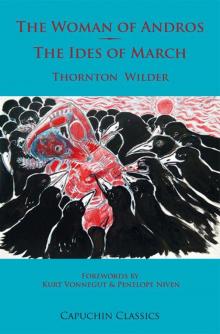 The Woman of Andros and The Ides of March
The Woman of Andros and The Ides of March